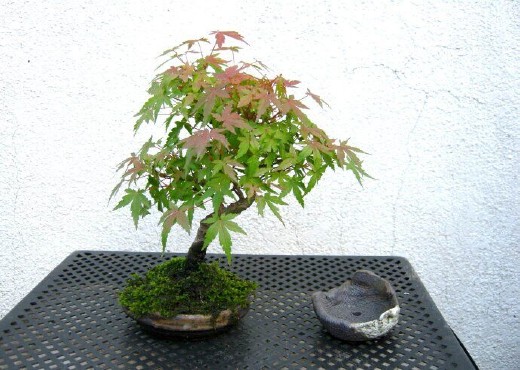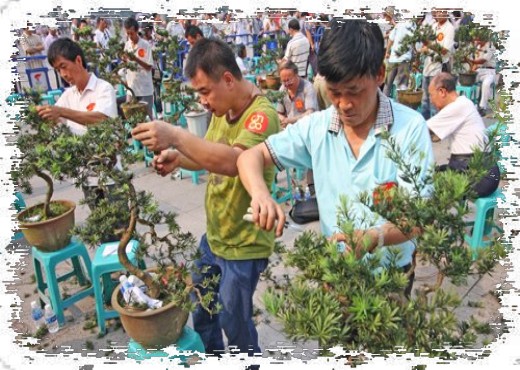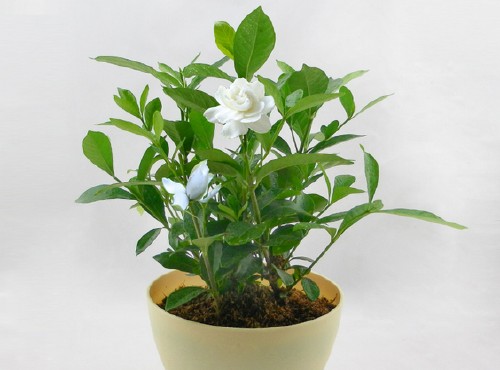Pose technique of Acer maple bonsai
Small deciduous trees of the genus Acer of the family Acer with dark gray bark and thin branchlets; young branches turquoise and slender. Purple flowers, purplish red when Samara is tender, yellowish brown when ripe, wings spreading into obtuse angles. Nutlets globose, veined conspicuously; wings and nutlets open at an obtuse angle. Like light, like warm and humid climate, cold resistance is not strong. It is mainly distributed in the Yangtze River Basin of China, Korea and Japan.

The leaf shape of Acer maple is beautiful, and it turns bright red in autumn. It is a brilliant foliage tree species, suitable for solitary planting, cluster planting and group planting. Graceful posture, strong ornamental in spring and autumn, often used as a spot plant in the main landscape area. It is suitable for sparse forest, grassland and courtyard planting, and is often used as front layer cultivation of evergreen trees. The following is to introduce the pose technology of chicken claw maple bonsai.
Processing:
Acer frutescens are often modeled with the combination of climbing and pruning. Brown silk should be used for climbing, and it must be removed in time, otherwise it is easy to fall into silk. If you use wire climbing, it is all the more necessary to prevent wire trapping. Climbing and binding processing should be carried out during the plum rain period or after defoliation. The big branch of Acer truncatum can be climbed, while the twig should be trimmed. Generally, each branch is left with 1-2 nodes, and the front end is cut off to make the two side branches into a girl shape. After that, they are pruned in turn, and finally form a crown.
Tree shape:
Acer truncatum is suitable for co-planting or jungle type. Isolated planting can be made into oblique dry type, curved dry type and other tree shape. The leaf shape is beautiful, red and colorful, quite beautiful.
In the production of co-planting, we should pay attention to the treatment of primary and secondary, density, height, distance, and so on. We can refer to the layout of money pine, which is mostly straight, while Acer maple is often bent, so we should also pay attention to the direction and degree of trunk bending when co-planting, so as to achieve unity and coordination.
Time: 2019-06-12 Click:
- Prev

The processing and modeling method of bonsai tree embryo
Saplings cultivated from an early age usually begin to process and shape after 3 to 5 years, while stumps excavated in the mountains can be processed and modeled after a year of embryo cultivation. Before processing, the tree embryos planted on the ground can be dug up and temporarily planted in pots of suitable size for operation and modeling. Large tree embryos can also be processed and modeled in situ.
- Next

Propagation method of Gardenia bonsai
The cultivation of gardenia bonsai is mainly based on cutting propagation, but also can be striped, split or sowed. Cuttings can be cut with 1-2-year-old strong branches from March to April, with 10-12 cm long, uniform nodes at the lower end, 1-2 pairs of leaves at the upper end, cutting depth 23, watering B after cutting, and often maintaining a certain degree of humidity.
Related
- Fuxing push coffee new agricultural production and marketing class: lack of small-scale processing plants
- Jujube rice field leisure farm deep ploughing Yilan for five years to create a space for organic food and play
- Nongyu Farm-A trial of organic papaya for brave women with advanced technology
- Four points for attention in the prevention and control of diseases and insect pests of edible fungi
- How to add nutrient solution to Edible Fungi
- Is there any good way to control edible fungus mites?
- Open Inoculation Technology of Edible Fungi
- Is there any clever way to use fertilizer for edible fungus in winter?
- What agents are used to kill the pathogens of edible fungi in the mushroom shed?
- Rapid drying of Edible Fungi

